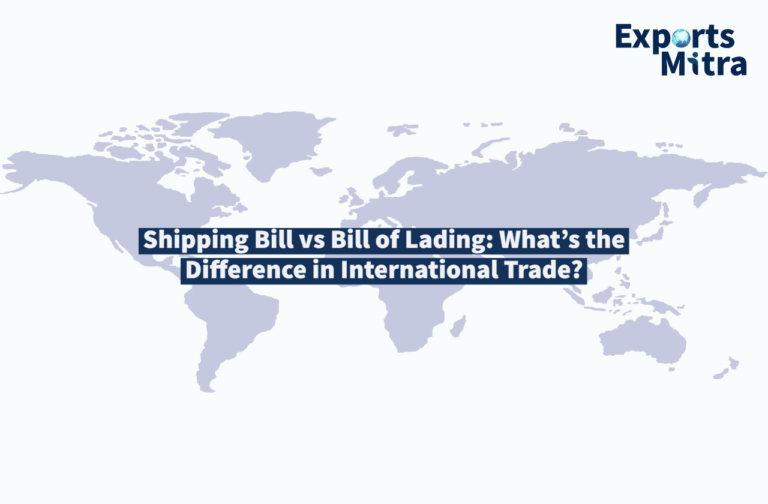Iron and steel are the backbone of modern industrialization, and their production and consumption are closely linked to economic growth and development. The global iron and steel industry has undergone significant changes in recent years, driven by factors such as technological advancements, changing consumer preferences, environmental concerns, and policy interventions. India is one of the world’s largest producers and consumers of iron and steel, with a rapidly growing domestic market and a significant presence in the global trade.
This article presents an overview of the changing trends in the iron and steel industry, with a focus on India’s scenario. The information presented here is based on Export-Import Bank of India’s Occasional Paper No. 215 titled “Iron & Steel Industry: Changing Trends,” which provides a comprehensive analysis of the industry’s dynamics.
Table of Contents
Global Iron and Steel Scenario
The global iron and steel industry has witnessed significant changes in recent years, driven by several factors such as technological advancements, changing consumer preferences, environmental concerns, and policy interventions. According to the World Steel Association (WSA), global crude steel production reached 1.8 billion tonnes in 2018, an increase of 4.6% compared to the previous year. China remains the world’s largest producer of crude steel, accounting for more than half of global production. Other major producers include Japan, India, the United States, Russia, South Korea, Germany, Turkey, Brazil, and Ukraine.
The demand for iron and steel is closely linked to economic growth and development. The WSA estimates that global apparent steel use (ASU) increased by 2.8% in 2018 compared to the previous year. The ASU is a measure of apparent consumption that includes domestic production plus imports minus exports.
The global iron and steel industry faces several challenges such as overcapacity, volatile raw material prices, rising energy costs, increasing competition from alternative materials such as aluminum and composites, environmental concerns related to emissions and waste, and trade tensions. The industry is also undergoing significant technological advancements such as Industry 4.0, which involves the integration of digital technologies into the production process.
Iron and Steel Industry Scenario in India
India is one of the world’s largest producers and consumers of iron and steel, with a rapidly growing domestic market and a significant presence in the global trade. According to the Ministry of Steel, India produced 106.5 million tonnes (MT) of crude steel in 2018-19, an increase of 3.3% compared to the previous year. The country’s per capita consumption of finished steel increased from 64.2 kg in 2017-18 to 69.4 kg in 2018-19, which is still significantly lower than the global average of around 225 kg.
The iron and steel industry is one of the core industries in India, contributing to slightly more than 2% of the country’s GDP. The industry has a highly developed manufacturing sector capable of producing crude steel to value-added steel products. Domestic iron ore availability is a major reason for the establishment of the steel industry in India. The country has significant reserves of iron ore, which are mainly located in the states of Odisha, Jharkhand, Chhattisgarh, Karnataka, and Goa.
The Indian iron and steel industry faces several challenges such as high input costs, inadequate infrastructure, low productivity levels, environmental concerns related to emissions and waste, and competition from imports. The government has implemented several policy interventions to address these challenges and promote the growth and competitiveness of the industry.
Policy Interventions
The Indian government has implemented several policy interventions to promote the growth and competitiveness of the iron and steel industry. Some of these interventions include:
1. National Steel Policy: In February 2018, the government launched the National Steel Policy (NSP) with an aim to increase domestic production capacity to 300 MT by 2030-31 and make India self-sufficient in terms of quality steel production.
2. Make in India: The Make in India initiative aims to promote domestic manufacturing across various sectors including iron and steel by providing incentives such as tax exemptions, subsidies, and easier access to credit.
3. Export Promotion Schemes: The government has implemented several export promotion schemes such as Merchandise Exports from India Scheme (MEIS), Export Promotion Capital Goods Scheme (EPCG), Advance Authorization Scheme (AAS), etc., to encourage exports from the iron and steel industry.
4. Import Tariffs: The government has imposed import tariffs on certain steel products to protect domestic producers from cheap imports and promote the growth of the industry.
Impact of Policy Interventions
The policy interventions implemented by the Indian government have had a significant impact on the iron and steel industry. The NSP aims to increase domestic production capacity to 300 MT by 2030-31, which would require significant investments in infrastructure, technology, and human resources. The Make in India initiative has encouraged domestic manufacturing across various sectors including iron and steel, leading to increased production and employment opportunities.
The export promotion schemes have helped Indian iron and steel producers to expand their global footprint and increase exports. According to the Ministry of Commerce and Industry, India’s exports of iron and steel products increased from USD 9.4 billion in 2017-18 to USD 11.2 billion in 2018-19, an increase of around 19%. The imposition of import tariffs has helped to protect domestic producers from cheap imports and promote the growth of the industry.
However, some experts argue that the policy interventions have not been sufficient to address the structural challenges faced by the industry such as high input costs, inadequate infrastructure, low productivity levels, and environmental concerns related to emissions and waste. They suggest that a more comprehensive approach is needed that addresses these challenges while promoting innovation, technology adoption, and sustainable practices.
Conclusion
The iron and steel industry is a critical sector for economic growth and development. The global industry is undergoing significant changes driven by technological advancements, changing consumer preferences, environmental concerns, and policy interventions. India is one of the world’s largest producers and consumers of iron and steel with a rapidly growing domestic market and a significant presence in the global trade.
The Indian iron and steel industry faces several challenges such as high input costs, inadequate infrastructure, low productivity levels, environmental concerns related to emissions and waste, and competition from imports. The government has implemented several policy interventions such as National Steel Policy (NSP), Make in India initiative, export promotion schemes, import tariffs to address these challenges.
While these policy interventions have had a significant impact on the industry’s growth and competitiveness, more comprehensive measures are needed to address the structural challenges faced by the industry while promoting innovation, technology adoption, and sustainable practices.






